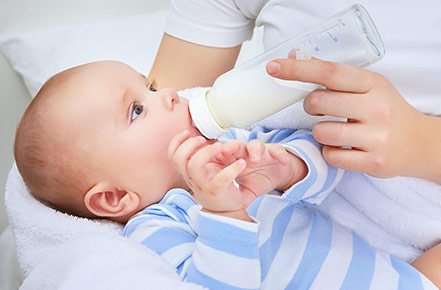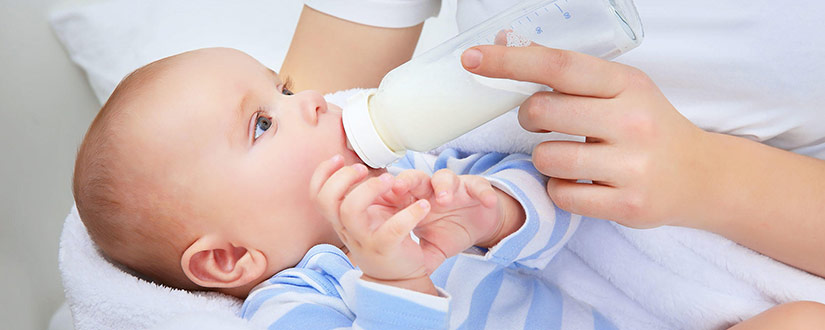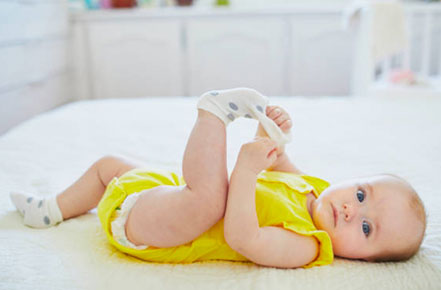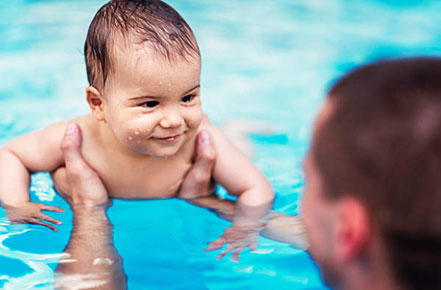For comfortable bottle feeding, you need to make sure your baby is using the right bottle nipple sizes. At some point, within the first year as a loving mother, you’ll prefer to bottle feed your chubby little one. However, are you familiar with the types of baby bottle nipples sizes to buy? Well, in this article, we’ll be appreciating particular aspects of baby bottle nipples that, as a mother, you ought to know. Stay with us!
Baby bottles play a significant role in your infant’s growth for proper feeding. Be that as it may, you choose to breastfeed your chubby little one, and there are several baby bottles with ranging flow rates. As a dedicated mother, you’ve got to choose what’s best for your baby, and that means going for the perfect baby bottles. In rare instances, you’ll find infants who are a bit more refined in their bottle preferences. However, most of them are okay with any bottle as long as the milk is flowing from it.
How to Select a Baby Bottle Nipple
We’re here to get your chubby little one the ultimate breastfeeding experience!
That is what you need once you’re out there in the field and would wish to attend to your infant with the best nipple for breastfeeding babies. Most manufacturers produce feeding bottle nipple sizes based on the breastfeeding experience. In the market, you’d appreciate that some baby bottles are designed with built-in valves for colic prevention specifically made for formula-fed infants.
To assist you with the selection process, we’ve captured the best nipples for newborns. Some of them include:
- Standard bottles – These are the most popular choice among moms. They come in various makes that you can look up and acquire at affordable prices
- Vented Infant Bottles – They’re designed to prevent the formation of air pockets. Cleaning them is, however, not easy
- Wide-Neck – They have a wide top opening that’s meant for more full nipples. Best preferred for infants who’ll often be switching from breast to bottle
- Angle-Neck – Their bent neck is ideal and makes feeding easier for less gassy babies
It’s good to appreciate that baby bottle nipple types are made from different materials. This gives nursing mothers the freedom to select types of nipples based on material preference;
- Stainless Steel – They’re ideal for maintaining the infant’s milk at constant temperatures, and well, that’s a good thing. If you’re a parent who’d wish for durable equipment, then this is it!
- Silicone Bottles – These silky and smooth silicone bottle nipples can give you a run for your money. Their pricing matches the quality.
Other factors to consider when choosing baby bottles are:
- The Shape – Good practice is to go for baby bottle nipples that are shaped just like the natural nipple. It gives your toddler the real-breast feel and is suitable for suckling.
- The Flow – The flow increases with increasing nipple size. In the market, you’ll find variable flow options. Note that the flow happens to change with how you hold the bottle, so be on the look-out to address any arising concerns.
Nipple Flow Levels
Are you familiar with the nipple flow levels? As a parent, you ought to be familiar with the nipple levels and in doing so, know when to change nipple flow and move to the next level. More often than not, baby bottle nipples are fixed to age ranges. However, you ought to appreciate that different babies will have their own feeding style, which might not match their set ages.
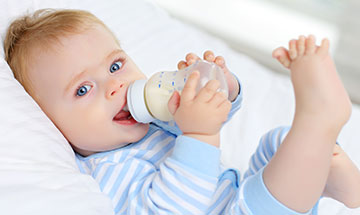
Here’s a guide from dr brown nipple sizes to help you out:
- 0 – 3 Months
The slow flow nipples are recommended as the starting feeding option for infants with no breastfeeding difficulties.
- 3 – 6 Months
Remember, the baby is growing, and that will mean an increase in the feeding demands. With baby growth, mothers tend to spend a long time feeding their infants with level 1 baby bottle nipple sizes. It should signal a switch to medium flow nipples!
This level is ideal once your infant is responsive to new solid feeds or secondary to recommendation for milk thickening by the pediatrician.
- 6 – 12 Months
With feeding development, there’s a demand by the infant to switch to a fast flow. This is best shown when you notice your little one is sitting up and shows consistent feeding with no difficulties. With fast flow, you’ll appreciate that the baby is taking large amounts at the breast and bottle.
Of note, there’s a unique Y-cut nipple that accommodates thicker liquids and cereals.
When to Switch Bottle Nipple Size

When is the right time to change nipple sizes?
You wouldn’t be reading this article if you knew your way around the baby bottle nipples. Now that you’re here sit back as we give you the necessary guidance on when to change nipple size.
Earlier on, we mentioned nipple sizes when it comes to choosing a baby bottle. It varies for the breastfed and those on formula feeds. The whole essence of going for the right nipple size is to ease feeding and make the experience more comfortable. Read on and find out more.
1. Formula Fed
Manufactures have gone the extra mile to attach flow guides on their baby bottles, or in some instances, you can find them on their websites. Ideally, older babies are preferably fed by larger nipples to meet their feeding needs, and they’re mature enough to handle the fast flows. The nipple levels we mentioned earlier are what you’ll find as flow guides on the bottles or website.
However, don’t depend so much on the age as babies are different. It is for this reason that as a parent, you ought to familiarize yourself with other indicators. Once you note the following, know that the baby requires a larger nipple size:
- Bottle smacking
- Long feeding times
- Aggravation on sight of the bottle
- Nipple flattening
- The baby is sucking hard
- Small feeds and getting hungry after a short while
These are telltale signs that you should ever be on the lookout for. If you don’t notice any of the above, stick to the current baby bottle nipple size and wait for the signs. Don’t hesitate to move up the next level of nipple size once you notice the above. There’s no scripted approach to this, its matter of monitoring and adapting to your situation.
2. Breastfed Infant

The best bottle for a breastfed baby is the level 1 slow flow rate. The thing with breastfed babies is that you won’t need to move up the level. Breasts release milk at a much slower rate, and that will mean babies would have to work for their milk. In light of this, you get to learn that the whole essence of not giving breastfed babies a bottle is to keep them from being lazy.
If you choose to bottle feed for a breastfeeding infant, chances are you might overfeed the infant. Caregivers are, therefore, required to strive to achieve matching experience to avoid such situations. A good practice is to frequently change positions and maintain an upright position when bottle feeding. In some cases, a fast flow nipple might be a working solution in instances where you’d wish to save on nursing time. Take your time and assess what’s best for your baby, and through such, you can come up with a practical approach to feeding your infant.
Experts recommend the use of slow flow rates in the event you’re exclusively pumping. The principle is to feed infants on demand and not schedule. Standard nursing time runs for around 20 minutes, so be sure to fall within that bracket.
Why Should I Increase the Nipple Flow During Feeding?
The nipple flows to measure the amount of breast milk that will be coming out of the baby jar once the infant sucks on it. The main aim of increasing the flow is to meet the infant’s feeding demands. With subsequent months, infants tend to grow and even become mature enough to handle faster flows. It would be ideal nursing care to increase the flow rate, and it also saves on time since slow flow options require a lengthy nursing time.
Cleaning the Bottles and Bottle Nipples

Proper nursing care will require that you know how to clean bottle nipples. You should clean baby bottles as soon as they finish feeding. The bottle brush is mostly used as a baby bottle nipple cleaner for its effectiveness in cleaning dried stuck milk. Once clean, you should rinse with fresh, clean water and allow it to dry.
There are other working techniques used to sterilize baby bottles. They include the following:
- Use of chemicals; these are disinfectant solutions that are usually diluted with water and used to cleanse and disinfect the equipment.
- Steam; high temperatures are effective in killing bacteria.
- Boiling; works more like steaming by using the principle of high temperatures to kill bacteria.
Conclusion

Always wash a new water bottle for kids before use and make sure to replace smaller baby bottle nipples with larger ones as the infant grows. Inspect baby bottle nipples regularly for wear and tear, and don’t hesitate to replace with new baby bottle nipple sizes.
Get a breastfed baby to take a bottle, and while at this, ensure to appreciate the nuances of baby bottle nipple sizes, and you’ll thank us later. For more information on this, check out Parenthoodroutine.com.
What more could you still wish to know about baby bottle nipple sizes? Let us know in the comments.

